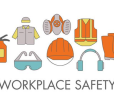Finding the ideal car leasing deals that meet your needs can be likened to discovering a hidden treasure.
Spotting a dazzling advertisement is not enough; you must also delve deeper, thoroughly investigate, and choose a lease that fits your unique driving style, car usage, and budget.
Together, let’s travel this path and provide you with guidance at every turn to help you locate the ideal fit.
Is Car Leasing A Good Idea?
If you are looking for a new car, but you don’t want to buy one, leasing might be a good option for you. Leasing is a form of financing that allows you to drive a new car for a fixed period of time, usually 2 to 4 years, and pay a monthly fee for it. At the end of the lease term, you can either return the car to the dealer, buy it for a residual value, or trade it in for another lease.
Leasing has many benefits, such as lower monthly payments, upfront costs, maintenance costs, and the ability to drive a new car every few years. However, leasing also has some drawbacks, such as mileage limits, higher insurance costs, potential fees for wear and tear, and the lack of ownership.
Therefore, before you decide to lease a car, you should do some research and compare different offers to find the best deal for your needs.
How To Find The Best Car Leasing Deals?
Now that you know what it is and why it is important, let us move straight to the point that you have been waiting for. Here are some tips on how to find the best car leasing deals for your needs.
1. Know Your Budget
The first step to finding the best car leasing deal is to know how much you can afford to spend and what kind of car you need. You should consider factors such as your income, your expenses, your credit score, your driving habits, your lifestyle, and your preferences. For example, if you drive a lot, you might want a car with good gas mileage and a high mileage limit. You might want a car with enough space and safety features if you have a family. If you care about the environment, you might want a car with low emissions and high efficiency.
2. Understanding Your Driving DNA
Before doing anything else, one should consider their driving habits and behaviors. Do you drive long distances on the weekends as a regular highway driver, or are you more of an urbanite who travels very occasionally? This individual understanding determines the type of lease that would work best for you. It is crucial to remember that mileage restrictions are frequently included in leasing agreements, and exceeding them might result in expensive penalties. Therefore, understanding your driving habits is crucial to choosing the best offer.
3. Vehicle Type: Reflecting Your Personality and Needs
Vehicles are much more than just machines; they are reflections of our personality and lifestyle. Pause to reflect on what you really want in a vehicle. Is it the green serenity of a hybrid, the utility of an SUV, or the slick appeal of a sporty sedan? However, the kind of vehicle that attracts you plays a vital role in determining the leasing deals you should pursue. Remember that your car selection is a reflection of your lifestyle; therefore, select the type that suits your daily needs and personal preferences.
4. Financial Health: Key to Sustainable Decisions
Delving into budgeting is crucial. The monthly lease payments need to be assessed and all the cumulative costs, including insurance, maintenance, and fuel costs. It is a risky step to take a deal that goes beyond the boundaries of your finances. Therefore, the need for an overall assessment of your financial situation is critical in selecting a leasing package that will not burden you financially.
5. Research: Your Lighthouse in the Leasing Maze
Well-informed decisions are based on extensive research. The process involves searching the internet, visiting different dealerships, and engaging in curious discussions. Comparing prices online can often reveal hidden gems, such as exceptional limited-edition bargains or exclusive discounts that are not widely publicized. Recall that you will be better positioned to make an informed decision with more information you gather.
6. Compare Different Offers
The next step is to shop around and compare different offers from different dealers and manufacturers. You can use online tools like Edmunds, Kelley Blue Book, or Leasehackr to find and compare different lease deals in your area. You can also visit local dealerships and ask for quotes. You should compare the following factors when evaluating different lease deals:
- The MSRP (manufacturer’s suggested retail price) of the car: This is the car’s sticker price before any discounts or incentives.
- Capitalized cost (cap cost) of the car: This is the negotiated price of the car after any discounts or incentives. The lower the cap cost, the lower the monthly payment.
- Residual value of the car: This is the car’s estimated value at the end of the lease term. The higher the residual value, the lower the monthly payment.
- Money factor of the car: This is the interest rate of the lease, expressed as a decimal. The lower the money factor, the lower the monthly payment.
- Lease term of the car: This is the length of the lease, usually expressed in months. The shorter the lease term, the lower the monthly payment, but the higher the upfront costs and the risk of exceeding the mileage limit.
- Mileage limit of the car: This is the maximum number of miles you can drive the car per year without paying extra fees. The higher the mileage limit, the higher the monthly payment, but the lower the risk of exceeding the limit and paying extra fees.
- Fees and taxes on the car: You have to pay these additional costs when you lease a car, such as acquisition fees, disposition fees, security deposits, registration fees, and sales taxes. The lower the fees and taxes, the lower the total cost of the lease.
7. Negotiation: Art of the Deal
The sticker price is not cast in stone. Negotiations can be your way into a win-win situation. Dealerships can sometimes be flexible, especially at the month’s or quarter’s end. Perhaps your bargaining skills may result in a leasing agreement that is much better than anticipated. You should try to lower the cap cost, money factor, fees, and taxes as much as possible and increase the residual value and mileage limit as much as possible.
You should also look for any special offers, such as cash rebates, loyalty bonuses, or conquest incentives, that can lower the cost of the lease. You should also read the lease contract’s fine print carefully and ensure you understand all the terms and conditions. You should also inspect the car before signing the contract and ensure it is in good condition.
6. Terms and Conditions: Devil in the Details
While the fine print is boring, it is essential. It is critical to analyze the contract in detail for wear and tear, lease termination terms, and a buy-out option after the lease ends. Knowing such things can help you avoid future problems and unplanned expenses. So, an in-depth analysis of the terms and conditions is a step that should not be neglected.
7. Afterthoughts: The Lease Endgame
It makes sense to start thinking about what should be done next when the lease term ends. Would you like to start a new lease with a newer model, keep your current one, or just give it back and look for a better one? Planning ahead for the end of your lease term will help you transition smoothly and prevent last-minute decisions.
Conclusion: Your Perfect Deal Awaits
The quest for the best car leasing deal is an exhilarating journey. It needs a mix of self-knowledge, financial responsibility, thorough investigation, bargaining abilities, and long-term vision. Customizing a lease to your specific requirements is about choosing the right car and creating an ideal balance between comfort, efficacy, and contentment. So, get ready for this adventure, and set out on this exciting quest to discover a lease that will make you feel like it was tailored specifically for you. The road ahead is full of exciting opportunities; the perfect deal lies in waiting.
Read Also:





























